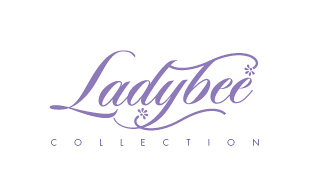A Beginner's Overview to Navigating the Boutique Fashion Scene
A Beginner's Overview to Navigating the Boutique Fashion Scene
Blog Article
Lasting Fashion: How Eco-Friendly Apparel Is Forming the Future of Style
As the style market deals with raising analysis over its ecological effect, the rise of lasting style supplies an encouraging option that lines up design with eco-friendly duty. boutique fashion. Exactly how does this motion truly influence the future trajectory of fashion, and what obstacles exist ahead in its widespread adoption?
Innovative Lasting Materials
As the apparel industry faces its ecological effect, innovative lasting materials have actually become a crucial solution for lowering environmental impacts. Among one of the most encouraging materials are those originated from all-natural, sustainable sources, such as natural cotton, hemp, and bamboo. These products not just lower reliance on nonrenewable fuel sources however also decrease hazardous chemical usage and water usage. Organic cotton, for example, utilizes significantly much less water than standard cotton and eliminates the requirement for toxic chemicals, therefore maintaining soil wellness and biodiversity.
Along with plant-based materials, developments in biofabrication have caused the development of lab-grown textiles. Mycelium leather, originated from mushroom roots, presents a eco-friendly and versatile alternative to pet leather. Its production results in considerably lower carbon emissions and water use, making it a more sustainable alternative for designer looking for to straighten with eco-friendly practices.
Recycled products are additionally obtaining traction, with polyester made from recycled plastic containers representing a considerable advancement. This technology not only diverts plastic waste from oceans and garbage dumps however additionally reduces power usage contrasted to producing virgin polyester. With each other, these materials highlight the potential for an extra sustainable garment industry, leading the way for ecologically aware layout and production.
Eco-Conscious Production
Structure on the technologies in sustainable materials, the apparel industry is additionally re-evaluating its manufacturing procedures to additionally minimize environmental impact. Trick approaches include minimizing water intake, decreasing carbon emissions, and removing dangerous chemicals. By adopting closed-loop systems, makers aim to reuse water and energy successfully, substantially diminishing waste. The combination of renewable resource sources, such as solar and wind power, right into production facilities additionally reduces dependence on fossil fuels.
An additional crucial facet is the reduction of toxic chemicals commonly used in dyeing and completing fabrics. Eco-conscious suppliers are shifting towards plant-based dyes and waterless dyeing modern technologies, which not just safeguard neighborhood ecosystems however likewise boost employee safety. Innovations like electronic printing decrease material waste and power intake, providing a cleaner choice to typical techniques.
With the advancement of blockchain technology, companies can currently supply comprehensive insights into their supply chains, guaranteeing ethical and eco pleasant techniques at each step. As the need for eco-conscious items expands, makers are forced to innovate, making certain that the future of fashion is both elegant and sustainable.
The Increase of Upcycling
Upcycling, a transformative technique in lasting style, involves artistically repurposing thrown out products right into new, top notch products. This cutting-edge method not only lowers waste however also lessens the demand for raw products, thus reducing the environmental impact of apparel production. By reconstructing and reimagining existing things, designers and style brand names have the ability to infuse originality right into their collections while promoting ecological responsibility.

Moreover, the upcycling activity has actually empowered independent designers and small organizations, who usually lead in technology because of their dexterity and imagination. By taking advantage of the plentiful availability of extra products, these entities add to a circular economy, showing that fashion can be both sustainable and fashionable. With upcycling, the industry takes substantial strides towards a more conscious and accountable future.
Thrift Culture's Impact
The blossoming thrift society substantially reshapes the landscape of lasting fashion, emphasizing the value of mindful intake. This cultural shift urges consumers to welcome used apparel, thus reducing the need for new garment production and decreasing environmental influence. Second hand shopping not only expands the lifecycle of clothes yet additionally reduces the carbon impact related to manufacturing, delivering, and disposing of clothing.
A vital aspect of second hand society is its democratization of style. By providing a large array of styles from different periods at inexpensive rates, second hand shops make style available to a broader audience. This access fosters a sense of uniqueness and creative thinking, as consumers mix and suit one-of-a-kind pieces to curate customized closets without adding to the rapid fashion cycle.
In addition, second hand culture advertises circularity in style, lining up find more information with the concepts of a round economic situation. By recirculating garments, the cycle of waste is disrupted, and resources are saved. This method sustains a change from a linear "take-make-dispose" design to a much more lasting structure. As even more customers and developers welcome second hand culture, the garment industry is forced to adapt, incorporating sustainable practices to meet the growing need for eco-conscious choices.

Future Trends in vogue
Fashion's development is increasingly shaped by sustainability-driven initiatives and technological technologies. One popular pattern is the surge of electronic style, where online garments can be worn in augmented fact atmospheres, significantly lowering textile waste.
In addition, the assimilation of blockchain modern technology uses new possibilities in transparency and traceability, permitting consumers to validate the sustainability credentials of their clothes. boutique fashion. This ensures accountability in supply chains and advertises honest sourcing techniques. 3D printing is yet another advancement that promises to revolutionize producing processes by allowing on-demand production, consequently reducing excess stock and waste
As these innovations develop, they are poised to transform the fashion landscape, merging design with sustainability. The future of style, for that reason, exists in a seamless blend of modern technology, innovation, and ecological obligation.
Conclusion
The change of the fashion market with sustainable methods indicates an essential shift towards ecological liability. This evolution not just aligns fashion with eco-friendly sustainability however likewise sets a criterion for future Our site patterns concentrated on duty and innovation.
As the fashion industry deals with increasing examination over its environmental effect, the surge of sustainable style offers a promising option that straightens style with eco-friendly duty.As the fashion industry grapples with its ecological impact, ingenious lasting products have arised as a vital remedy for reducing ecological footprints. With each other, these products emphasize the potential for a more sustainable fashion industry, paving the method for eco aware layout and manufacturing.
Structure on the developments in sustainable materials, the fashion market additional reading is likewise re-evaluating its manufacturing processes to even more reduce environmental impact. boutique fashion.Upcycling, a transformative practice in lasting fashion, involves creatively repurposing discarded materials right into brand-new, high-quality items
Report this page